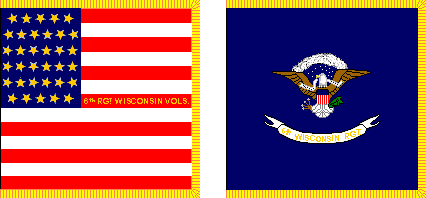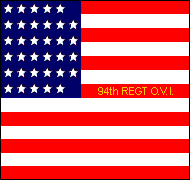UNITED STATES OF AMERICA
REGIMENTAL COLORS & FLAGS OF THE UNION ARMY 1861-65
The Regular Army of the United States was tiny at the beginning of the Civil War: ten regiments of infantry, four regiments of cavalry and four regiments of artillery. Nine additional infantry regiments, two cavalry regiments and one artillery regiment were raised in 1861-62 but state militia and state volunteer regiments made up the bulk of the Union Army. These were raised and organized by the states, then taken into federal service. Initially many state militia and state volunteer regiments wore distinctive uniforms but as the war progressed the standard Regular Army uniform was adopted by all.
Each infantry regiment of the Army received a National Color and a Regimental Color. Regiments also had flank marker flags. Companies had general guide flags (guidons), most often of the Stars & Stripes pattern. As their name suggests, camp colors were used when a regiment was encamped and the silk colors were deposited in the regimental headquarters. Standards for cavalry regiments were the same but smaller. At the beginning of the war cavalry and artillery guidons were red and white with the regimental number over the company or battery letter but in 1862 a War Department order specified guidons patterned after the Stars and Stripes.
When an infantry regiment was drawn up in line formation, the position of the colors indicated the center of the line, the guidons indicated the disposition of the companies and the flank markers indicated the regiment's right and left flanks. The line was dressed by aligning the guidons and flank markers on the colors.
Images Added September 2018
Guidon, 6th Pennsylvania Cavalry Guidon, 1st Maine Heavy Artillery
















